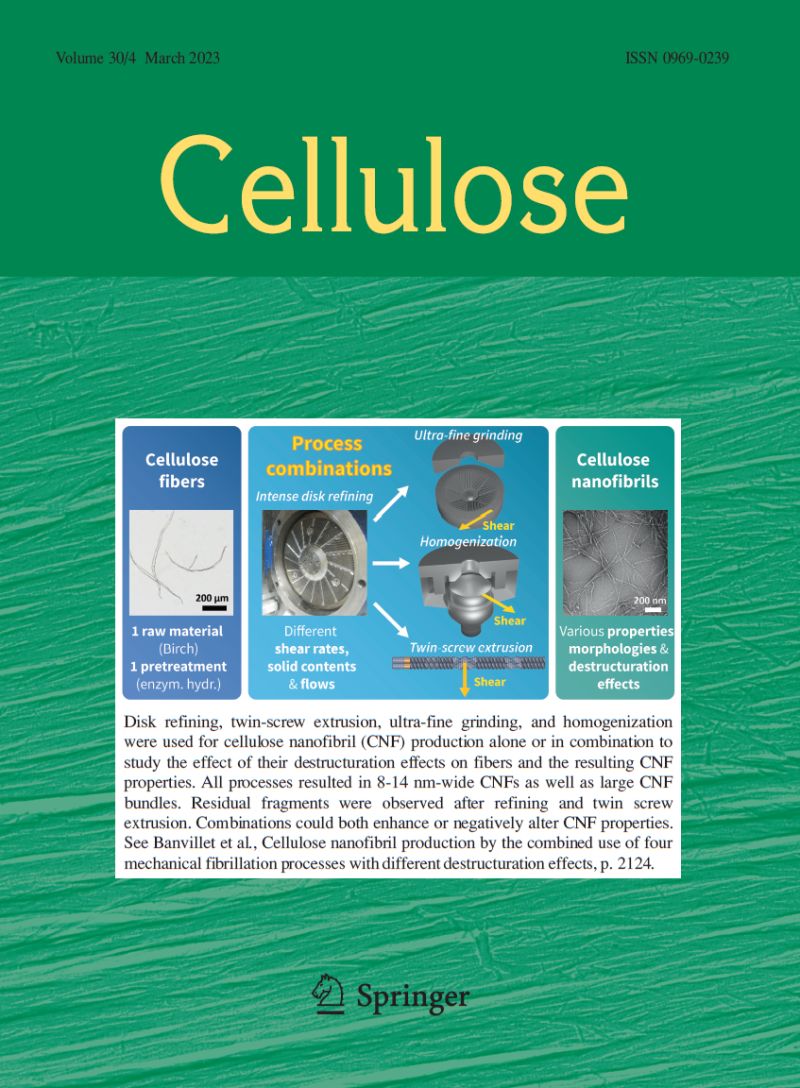Shape stabilized microcrystalline cellulose/methyl stearate/graphene nanoplatelet composite with enriched thermal conductivity and thermal energy storage/release performance
Abstract
Recently, great effort has been made towards the preparation of seepage-free composite phase change materials for advanced thermal energy storage (TES) systems. Within this context, in this study, shape stabilized microcrystalline cellulose (MCC)/methyl stearate (MtS)/graphene nanoplatelet (GnP) composites as novel heat storage materials were produced by facile vacuum impregnation method. The effect of GnP on the MtS loading ratio in the composite structure as well as its effect on other properties such as chemical, latent heat, thermal stability, crystalline, morphological and heat storage–release performance were extensively studied. A high MtS loading rate of 65 wt% was achieved in the shape stabilized composite, in which the MCC–GnP hybrid structure was used as the supporting framework. This composite also offered the highest heat storage–release performance with a thermal conductivity value of 0.51 W/mK. The improved thermal conductivity was also confirmed by reductions in melting–freezing times and infrared thermal image capture analysis. DSC results showed that this composite melts at 35.32 °C with a melting enthalpy of 147.97 J/g. The proposed MC/MtS/GnP composite offered high thermal stability as well as excellent cycling stability after 1000 melt–freeze cycles. All test results suggest that the prepared MCC/MtS/GnP composites offer considerable potential for various low-temperature TES applications.

 求助内容:
求助内容: 应助结果提醒方式:
应助结果提醒方式:


